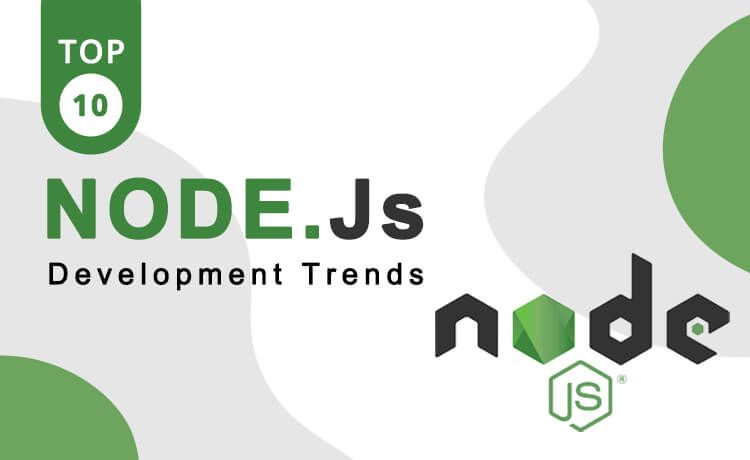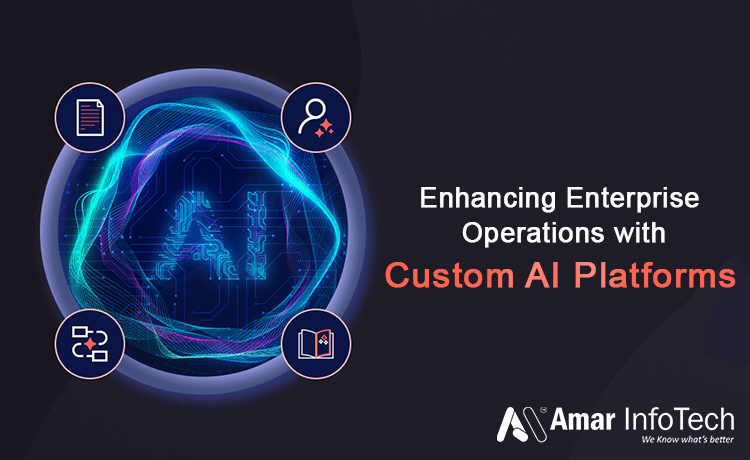Node.js is a cross-platform, open-source, JavaScript runtime environment that allows developers to build fast and scalable network applications. Developed in 2009 by Ryan Dahl, Node.js has gained immense popularity in recent years due to its powerful features and ability to handle large amounts of data.
In this blog post, we will explore the features of Node.js, the reasons why it's a must-have for developers, and the top Node.js development trends that will fuel your success in 2025.
Top 10 Node.Js Development Trends
- 1) About Node.js
- 2) Real-time applications
- 3) Serverless Architecture Development
- 4) Microservices
- 5) GraphQL Deployment in Node.js apps
- 6) MEAN & MERN Stack
- 7) Internet of Things (IoT)
- 8) Cloud Computing
- 9) DevOps
- 10) Fast and flexible apps development using Node.js
- 11) Consult Expert Node Developers from Amar Infotech
- 12) Conclusion
About Node.js
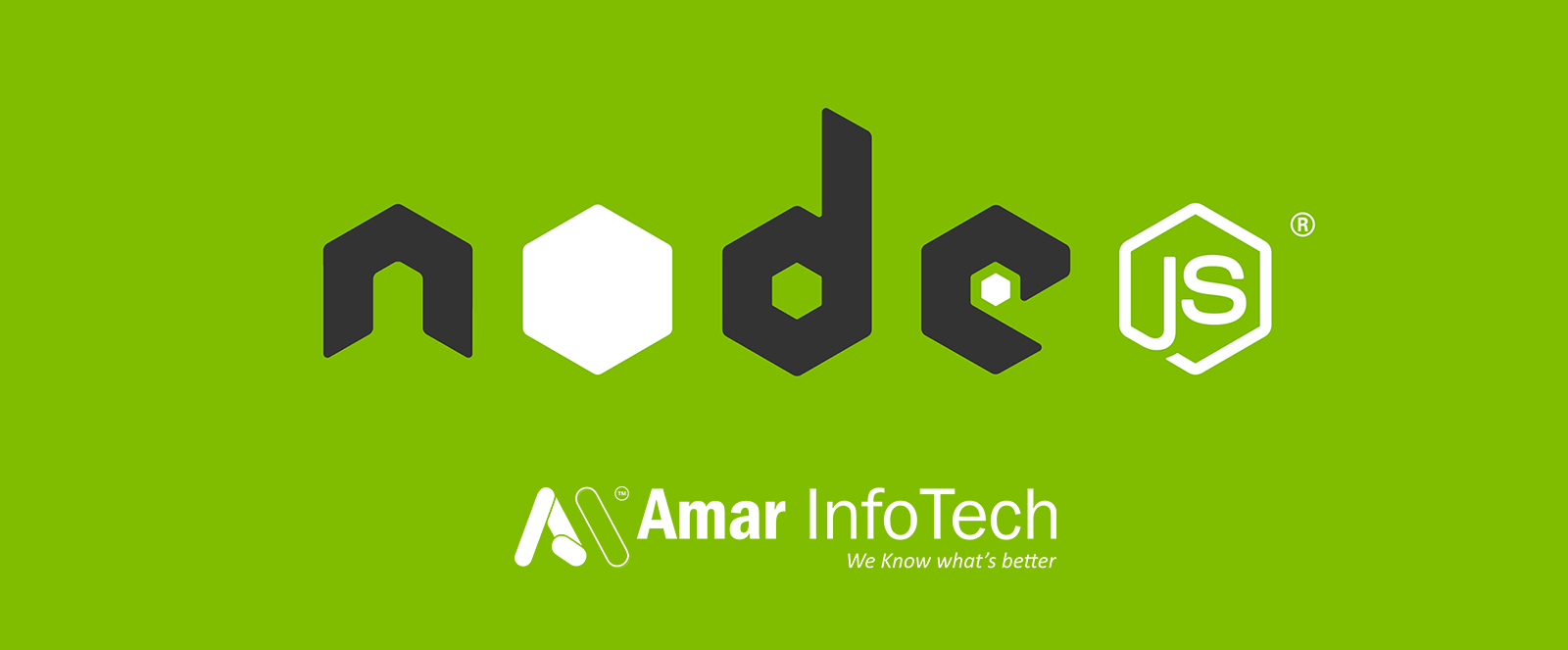
Node.js, a JavaScript runtime, is constructed on Chrome’s V8 JavaScript engine, and it operates on an event-driven, non-blocking I/O model, which boosts its performance and decreases its weight. The Node.js ecosystem, npm, is the world’s largest open-source library system.
Node.js is suitable for the development of fast, adaptable network applications, especially data-heavy, real-time applications that span across distributed devices.
The Node.js Foundation manages the Node.js open-source project and strives to enhance the technology, cultivate a diverse and dynamic community, and establish its future course.
Amar Infotech is a Node.js API development company in India that helps clients handle high-speed data and enhance data exchange and retrieval performance through innovative enterprise web solutions. We have the strength of Node.js team to build high-performing real-time web applications. NodeJS is a backend counterpart of AngularJS and is a part of Mean Stack Development Suite.
Top 10 Node.Js Development Trends
Node.js is a popular open-source runtime environment that allows developers to build fast and scalable web applications. With its powerful capabilities, Node.js is constantly evolving, and here are the top 10 Node.js development trends to keep an eye on:
Real-time applications
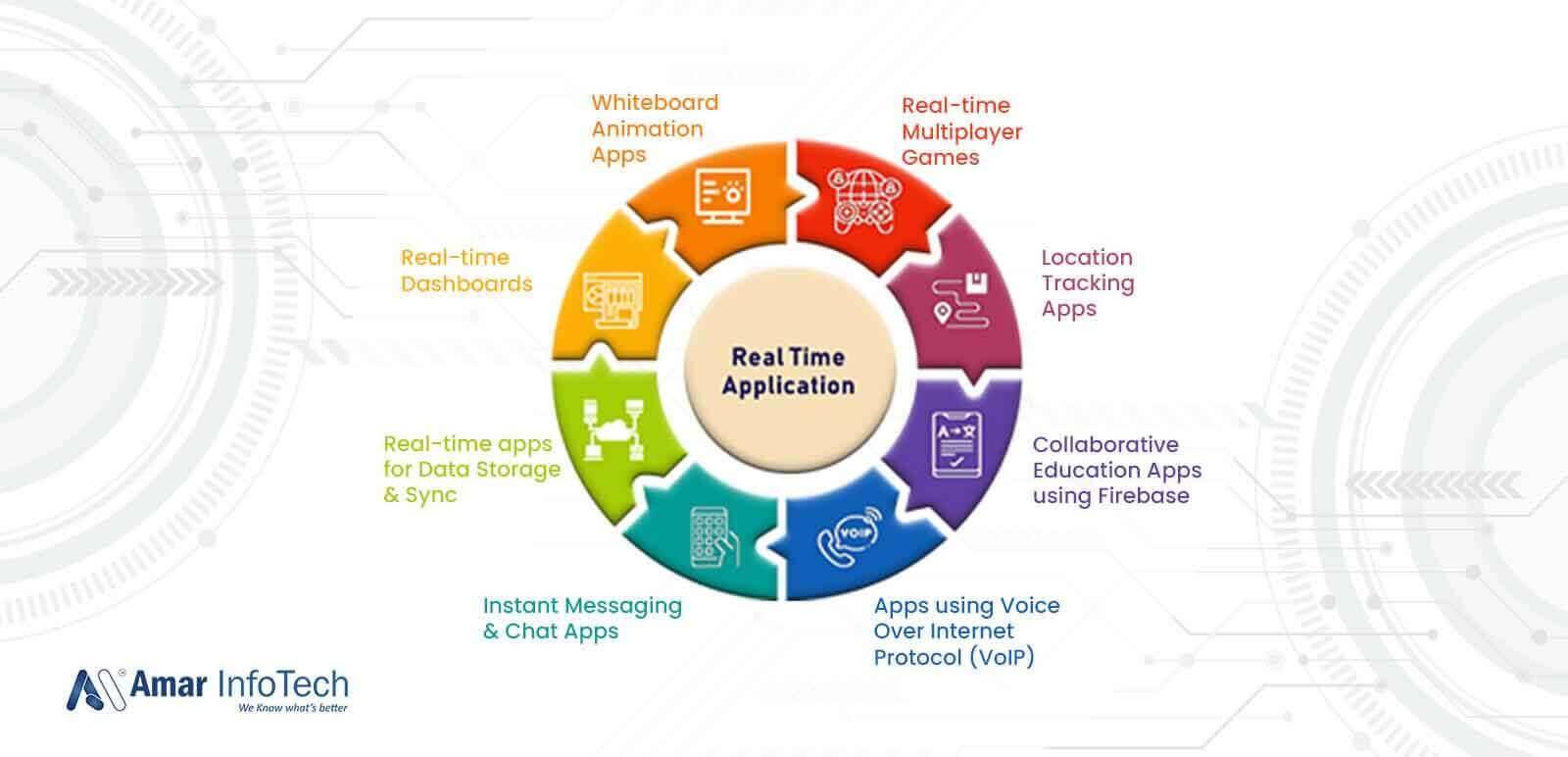
Real-time applications (RTAs) have become increasingly popular across various industries due to their ability to provide real-time updates and interactions for users. Businesses are leveraging RTAs to increase customer engagement and improve user experience. The NodeJS framework is preferred by expert NodeJS developers for building scalable and fast web applications that can handle multiple requests simultaneously.
Node.js can be used for its real-time capabilities and event-driven architecture, while Laravel can be used for its powerful server-side capabilities, including routing, middleware, and database management.
To learn more about the latest trends in Laravel development for eCommerce applications, you can visit the Laravel Development Trends article. This article provides insights and information about the latest techniques, tools, and strategies used by developers to create high-quality and scalable eCommerce applications development using Laravel.
Some of the most common use cases of Node.js in real-time applications include:
- Online Gaming Apps
- Video Conferencing Apps
- Instant Messaging Apps
- E-Commerce Transaction Apps
- Document Sharing Apps
- Voice-Over-Internet Protocol (Voip) Apps
Serverless Architecture Development
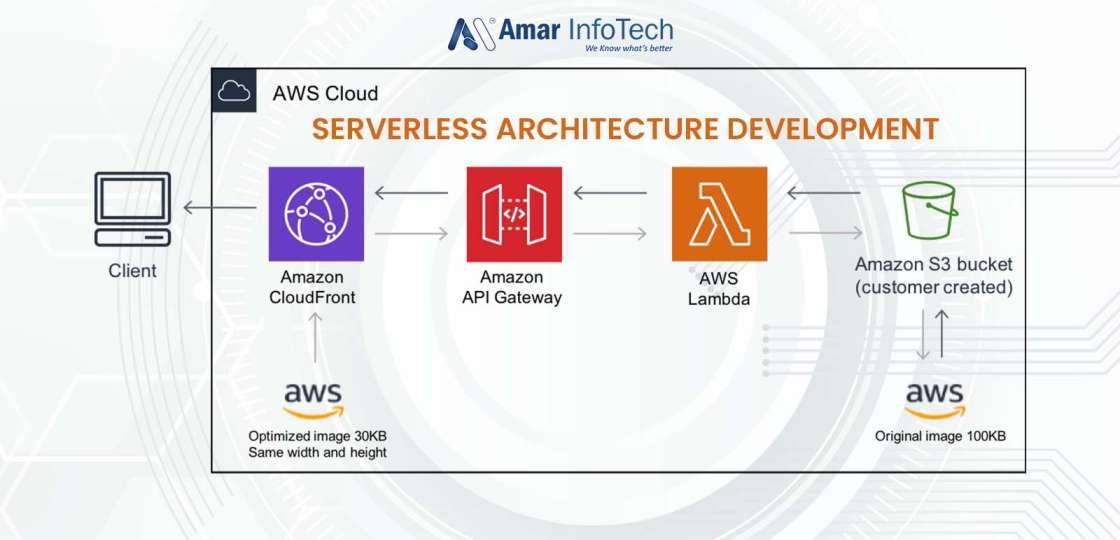
Serverless architecture has emerged as a new and popular trend in the market for developing and deploying applications. This modern approach eliminates the need to manage servers, databases, or any other infrastructure, enabling developers to focus solely on building their applications.
Many leading companies, including Amazon Web Services (AWS), Google Cloud Platform (GCP), and Microsoft Azure, have already adopted serverless architectures, offering pre-built solutions for developers looking to build applications without having to worry about managing infrastructure.
NodeJS has emerged as a crucial player in the development of serverless architecture. It enables developers to write code once and run it anywhere, without worrying about server maintenance or updates.
Serverless architecture offers several advantages, such as:
- Pay-as-you-go pricing model
- Rapid deployment
- Highly scalable
- Focus on business logic
With serverless architecture, you only pay for what you use. There's no need for internal architecture administration or database management, and you don't have to worry about scaling up when workloads increase. This reduces your dependency on hardware and software.
Serverless architecture is known for its speed. You can quickly deploy apps in a matter of hours because there's no infrastructure construction to slow you down. Faster deployments also make scalability simpler.
Serverless architectures are highly scalable because they don't require you to provision resources up front. They can automatically adjust to changes in demand for your application without any complex changes.
Developers don't have to worry about managing infrastructure, which means they can spend more time working on their core business logic and improving code quality instead of maintaining servers and dealing with load-balancing issues.
Microservices
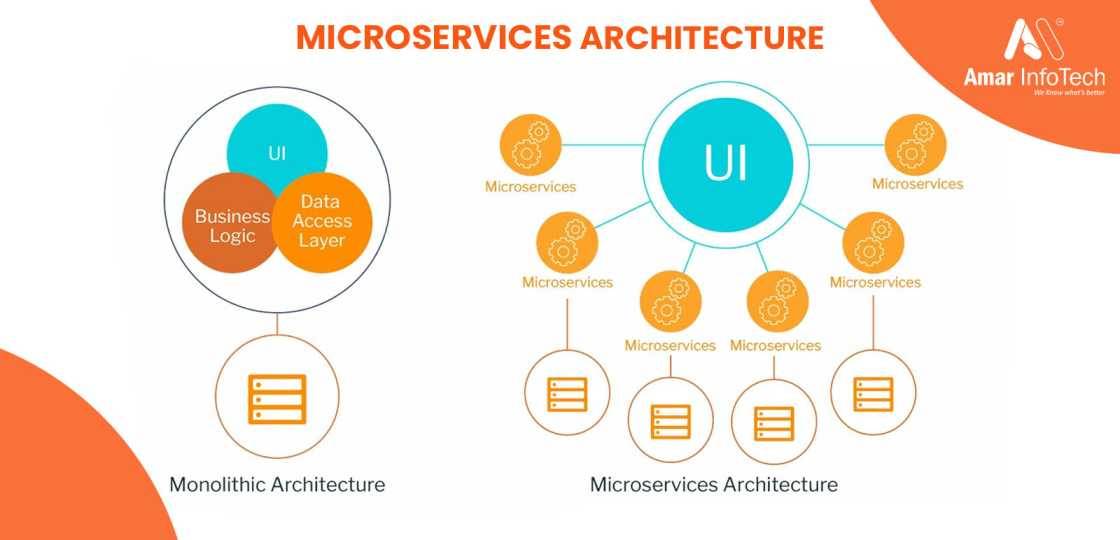
In recent years, Microservices has gained popularity as a software architecture style. A Microservices architecture consists of small, independent services that run in their own process and communicate with lightweight mechanisms like HTTP resource API.
A Microservices architecture offers many advantages like rapid development, continuous delivery, deployment, scalability, and resilience. It also allows developers to focus on one service at a time without worrying about impacting other services.
The microservices style promotes the use of small services that are built around business capabilities and can be developed using Node.js technology.
Node.js provides several microservices frameworks like Express and Nest that make it easier for developers to build their microservices using Node.js. This trend has made Node.js a popular choice for creating innovative applications due to its independent development, scalability, and reusability.
Graphql Deployment In Node.Js Apps
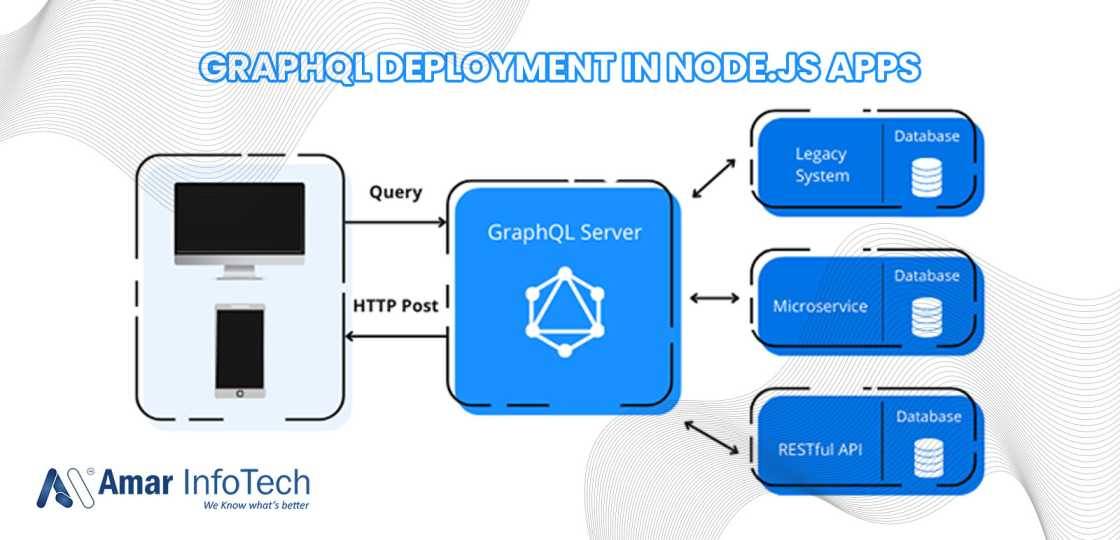
In 2012, Facebook created GraphQL, a query language that was later released in 2015. It provides a single endpoint for clients to interact with their database, resulting in more efficient communication compared to traditional REST and other web service architectures. GraphQL also returns data in a single format, simplifying the integration of responses.
Although GraphQL has been compared to REST, it offers a unique methodology for creating online APIs that allows clients to specify the desired data structure, and the server will then return the same structure. However, this may limit the amount of data that can be returned and restrict the caching of query results.
Despite its name, GraphQL does not offer a full range of graph operations, unlike a comprehensive graph database like Neo4j or even dialects of SQL that support transitive closure. The flexibility and richness of the query language may also add unnecessary complexity for simple APIs.
Nevertheless, GraphQL has gained popularity among developers, with companies such as Facebook, Shopify, Twitter, and Instagram utilizing it to improve their development speed and enhance the developer experience. Apollo GraphyQL, launched in 2019, is estimated to be used in 322,999 websites by 2022, demonstrating its potential for growth and trust among developers.
MEAN & MERN Stack
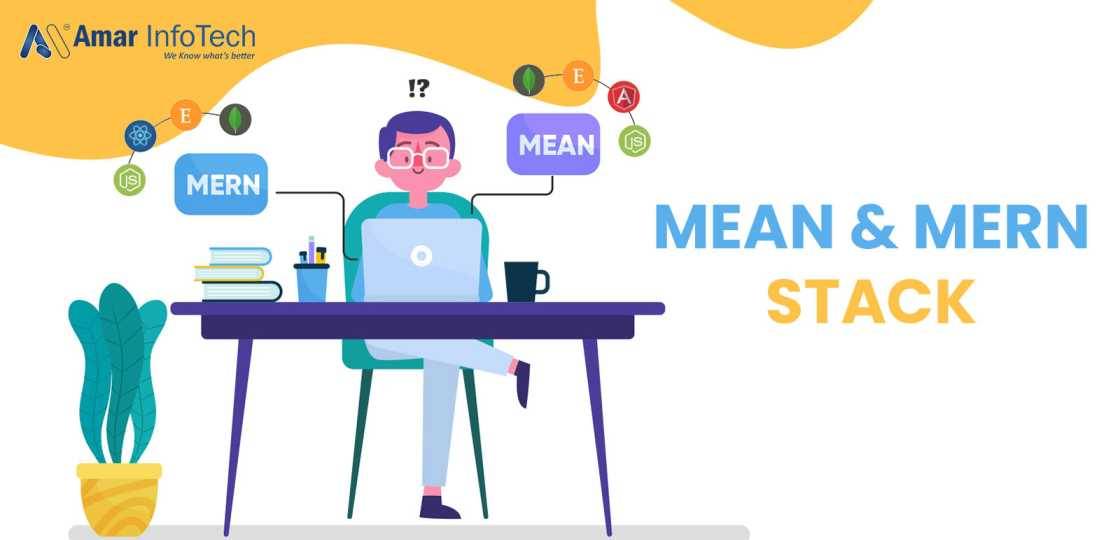
Companies seek to hire MEAN developers because the MEAN stack combines MongoDB, Node.js, Express.js, and AngularJS, making it a popular web development solution used by startups and large organizations alike. MEAN is preferred by expert MERN stack developers due to its ease of use and flexibility.
MERN stands for MongoDB, ExpressJS, React, and NodeJS. This stack is similar to MEAN, but with the addition of React or AngularJS on top of it, making it more suitable for front-end development. Both stacks are highly popular in the tech world because of their simplicity and ability to build complex applications with everything already bundled into one package.
MERN stack is used by major internet businesses such as Netflix, to ensure the best web development experience for their users. As both MEAN and MERN stacks continue to grow in popularity, Node.js will remain an essential part of both stacks.
Internet of Things (IoT)
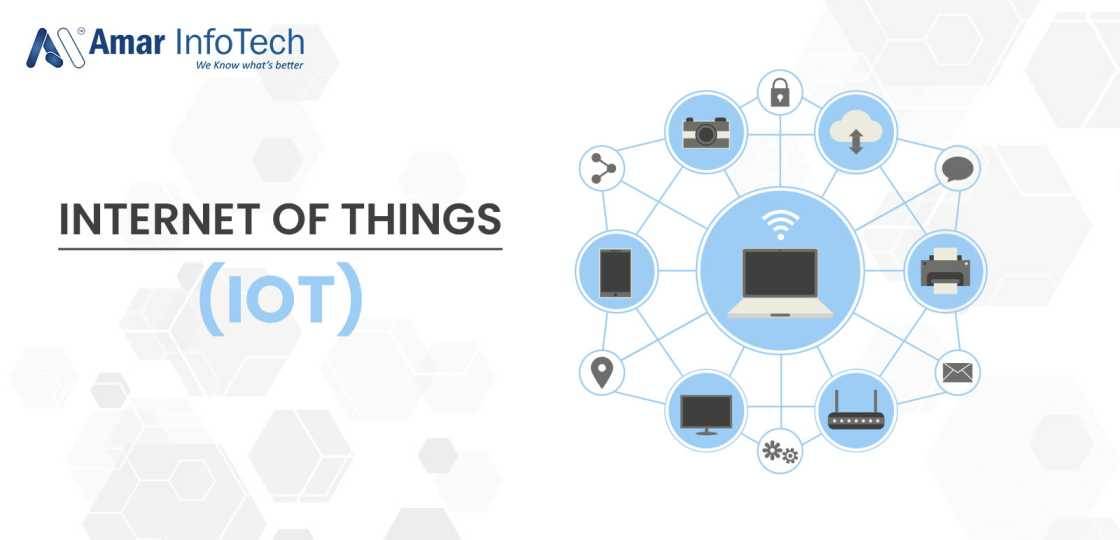
Node.js is an excellent platform for developing your next connected device, especially since the Internet of Things (IoT) is becoming increasingly popular.
The IoT refers to the network of devices that are connected to the internet. These devices can include home appliances, wearable technology, and health monitors. The main advantage of these devices is their ability to communicate and exchange data across a network.
The IoT has the potential to revolutionize the way we live and work. It can improve efficiency, accuracy, and reduce human intervention. When combined with sensors and actuators, the IoT becomes a cyber-physical system that includes innovations like smart homes, smart cities, and smart grids.
Node.js is an ideal platform for building IoT applications because it's lightweight, fast, and easy to use. Its popularity among developers also means that finding skilled resources shouldn't be a challenge.
The IoT market is growing at a rate of 18%, with over 14.4 billion connected devices worldwide. This growth is not limited to smart homes and wearables but also includes industrial applications, agriculture, health care, and transportation systems.
Therefore, if you're looking to build a connected device, Node.js is an excellent choice, given its advantages and potential for future growth.
Cloud Computing

Cloud computing provides on-demand shared computer processing resources and data to computers and devices via the internet. It enables resource sharing to achieve coherence and economy of scale, much like a public utility. It is a natural evolution from centralized mainframe-based computing.
With cloud computing, users can access applications, files, and services over the internet without purchasing hardware or software, allowing businesses to focus on growth rather than cost control.
As more companies move towards cloud-based computing, Node.js is becoming a popular choice for cloud computing solutions like AWS Lambda or Azure Functions due to its efficiency and cost-effectiveness.
For businesses looking to develop new products or services, using Node.js for their projects makes sense due to its lightweight nature and fast performance, which makes it easy to scale up or down as needed. As this trend continues to gain popularity, Node.js will continue to play an essential role in cloud computing.
DevOps

DevOps is a set of practices that emphasizes collaboration and communication among software developers, IT operations professionals, and other stakeholders. Its goal is to streamline the software development and deployment process, enabling organizations to deliver high-quality products and services faster.
In the DevOps environment, automation is key, and Node.js is well-suited to this approach. It provides a lightweight and flexible platform for creating scalable and cloud-based applications, which can be easily automated using tools like Jenkins, Ansible, and Docker.
One of the key benefits of Node.js in a DevOps environment is its ability to facilitate collaboration. With Node.js, developers can write code that runs on both the server and client sides of an application, keeping them in sync at all times via JavaScript code running on both sides. This makes it easy for developers to collaborate using the same language and ensures that changes are synchronized across the entire application stack.
Fast And Flexible Apps Development Using Node.js
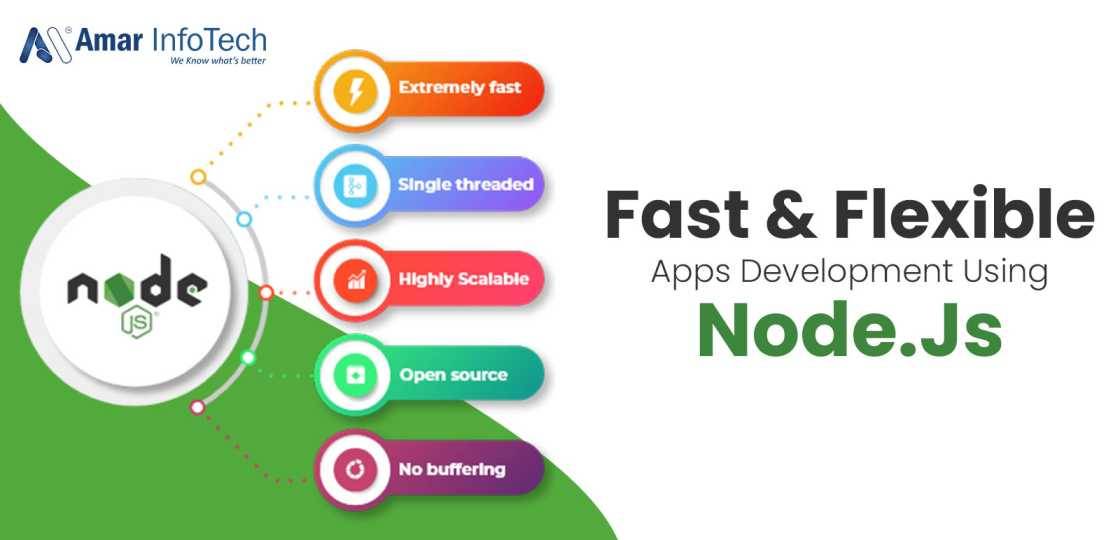
Node.js is a versatile platform that empowers developers to create fast, scalable, and flexible projects. One of the key advantages of Node.js is its ability to handle multiple tasks simultaneously without compromising on efficiency or progress, making it an ideal solution for the era of multitasking.
Furthermore, Node.js allows developers to implement significant changes to their applications without having to revamp the entire app framework, enabling them to reach a broader audience and bring about substantial updates quickly.
As a result, Node.js is an invaluable tool for businesses, providing significant flexibility and versatility, making it a key asset for companies looking to develop innovative solutions and manage complex multitasking.
Consult Expert Node Developers from Amar Infotech
Amar Infotech, based in India, is a reputable company specializing in Node.js development services. Our team consists of highly skilled Node.js developers who have years of experience building scalable and reliable web applications using various frameworks and technologies.
As a leading backend development company, we are dedicated to providing our clients with comprehensive web application development solutions. Whether you're a startup or a Fortune 500 company, we are committed to delivering high-quality products within your budget and timeframe. If you're looking to hire MERN developers, we encourage you to get in touch with us, and we'll demonstrate how we can assist you in achieving your objectives.
Conclusion
Node.js is rapidly evolving and is expected to be a leading technology in web development in 2025. As businesses continue to demand fast and scalable applications, Node.js provides an excellent solution for developers to achieve their goals. With its lightweight and flexible nature, it is an ideal choice for developing both server-side and client-side applications.
If you're looking for a reliable Node.js development company in India, then look no further than Amar Infotech. With over a decade of experience in the industry, our team of skilled developers can help you build high-quality and scalable web applications. Contact Amar Infotech today to learn more about our Node.js development services and how we can help you bring your project to life.
